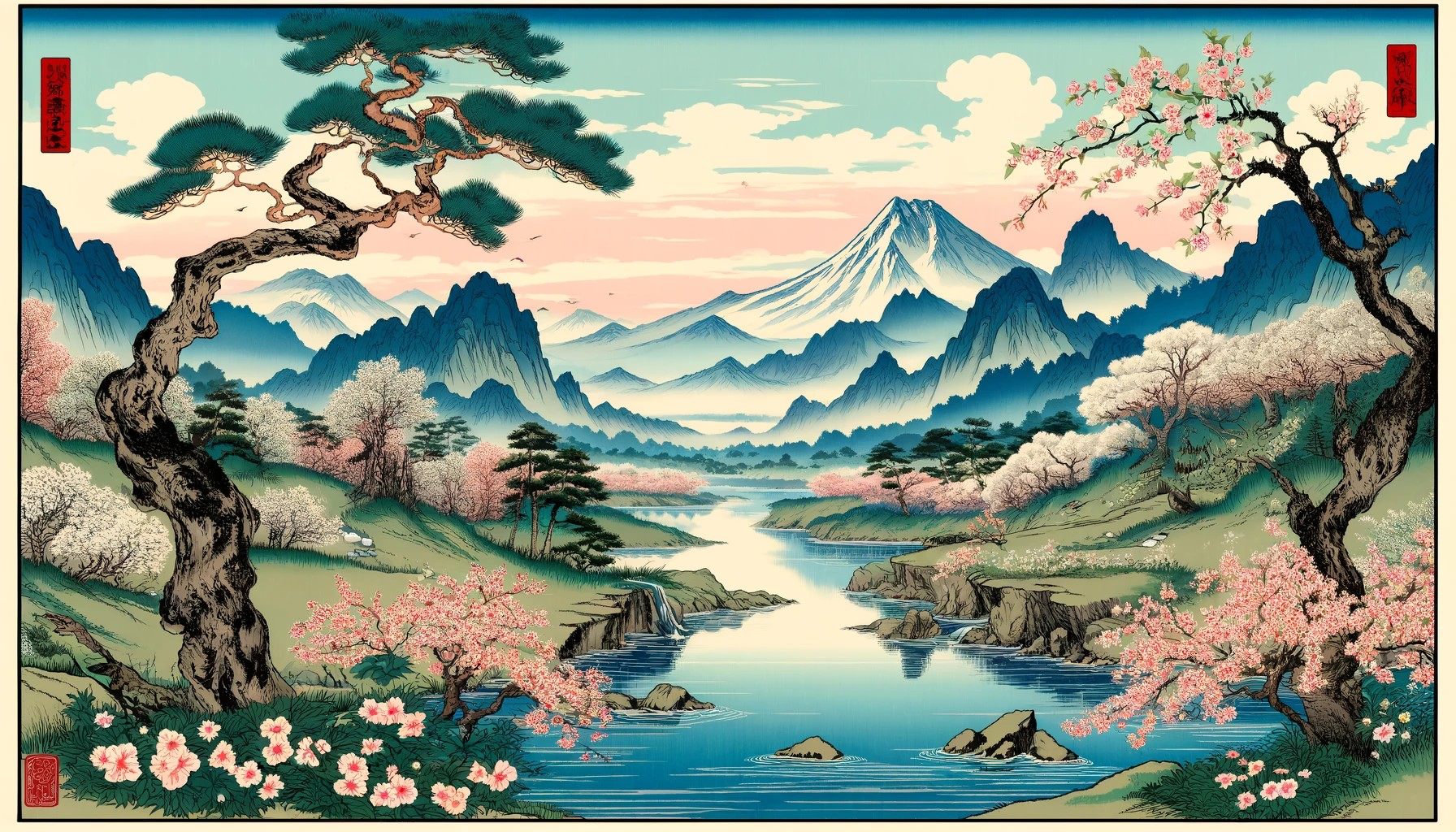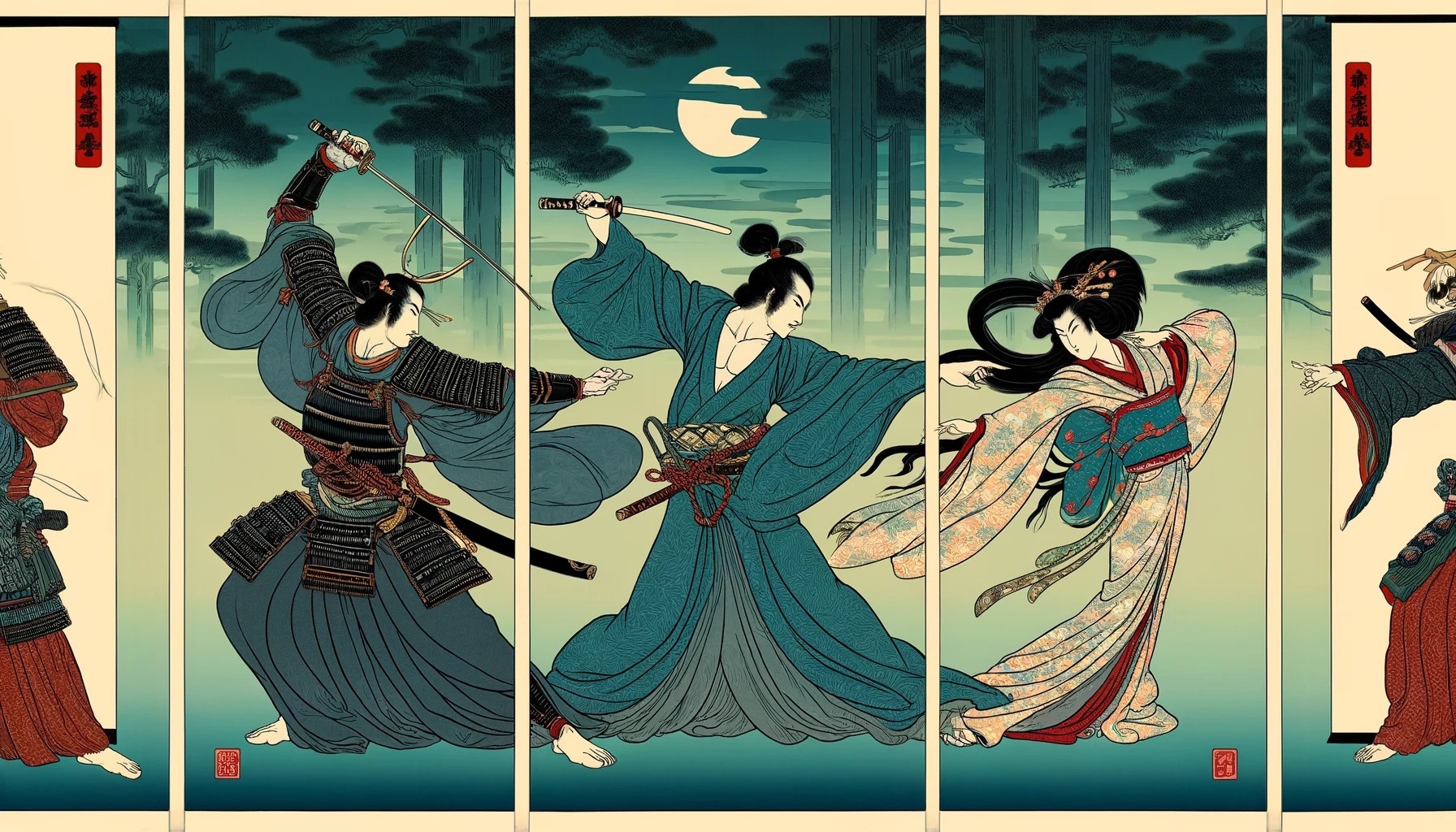Utagawa Kunisada (1786 ~ 1865)
Kunisada was born in the Honjo district of Edo (modern Tokyo, 東京) as Kunisada Tsunoda,
into a family that owned a hereditary ferry service. He showed significant promise in painting and drawing
from a young age, thanks in part to his family's connections with literary and theatrical circles. At the age of
15, he became a pupil of Toyokuni I (豊国) of the Utagawa school, later adopting his master's name in 1844 to become Toyokuni III.
Throughout his career, Kunisada specialized in ukiyo-e prints, focusing on traditional subjects such as kabuki, bijin (美人,
beautiful women), shunga (春画, erotic prints), and historical scenes. His works reflect the culture of Japan in the years leading up to
the country's opening to the West.
He was incredibly prolific, with his output including nearly 20,000 prints, illustrated books, and other privately commissioned works,
earning him a reputation that surpassed contemporaries like Hokusai (北斎) and Hiroshige (広重).
Kunisada was particularly renowned for his portraits of kabuki actors (yakusha-e, 役者絵) and depictions of beautiful women, often courtesans
from the Yoshiwara district. He collaborated with the author Ryūtei Tanehiko (柳亭種彦) to illustrate a series of books based on the classic novel
"The Tale of Genji," moving the setting from the old capital of Kyoto to Edo. This project started the new ukiyo-e genre of genji-e (源氏絵) and
became a phenomenal success, being the first Japanese publication to sell over 10,000 copies.
Despite his fame in 19th century Japan, Kunisada's reputation among Western collectors remained low until the 1990s, when his work was reevaluated
through intensive studies.
Kunisada died in 1864 in the neighborhood where he was born, at the age of 70, leaving a lasting legacy as one of the most active and popular ukiyo-e masters.
Notable students of Kunisada included Kunichika Toyohara (豊原国周), Sadahide Utagawa (歌川貞秀), and Kunisada II Utagawa (二代目国貞).
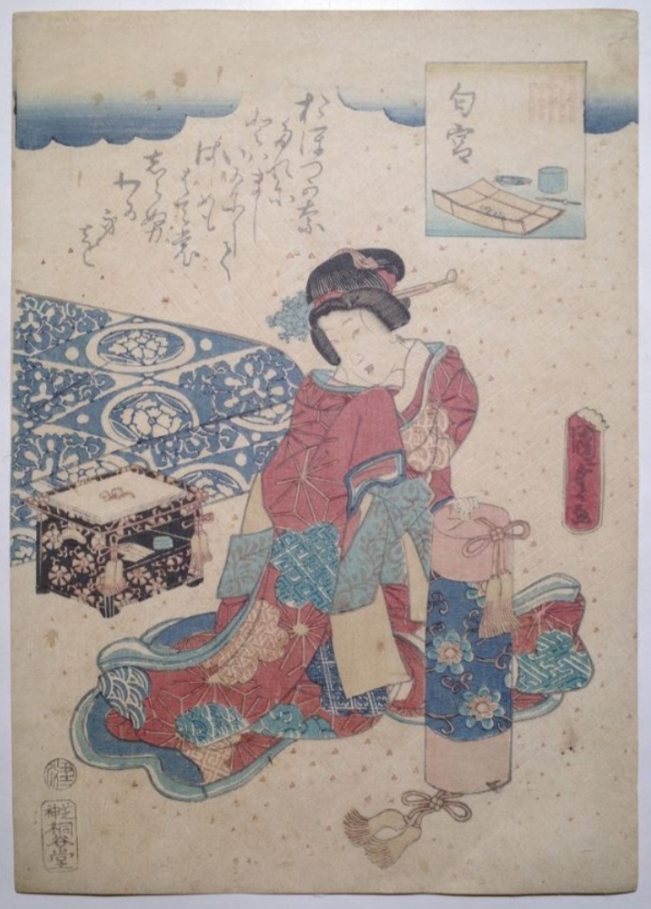
Niō no miya
Fifty four scenes from Genji
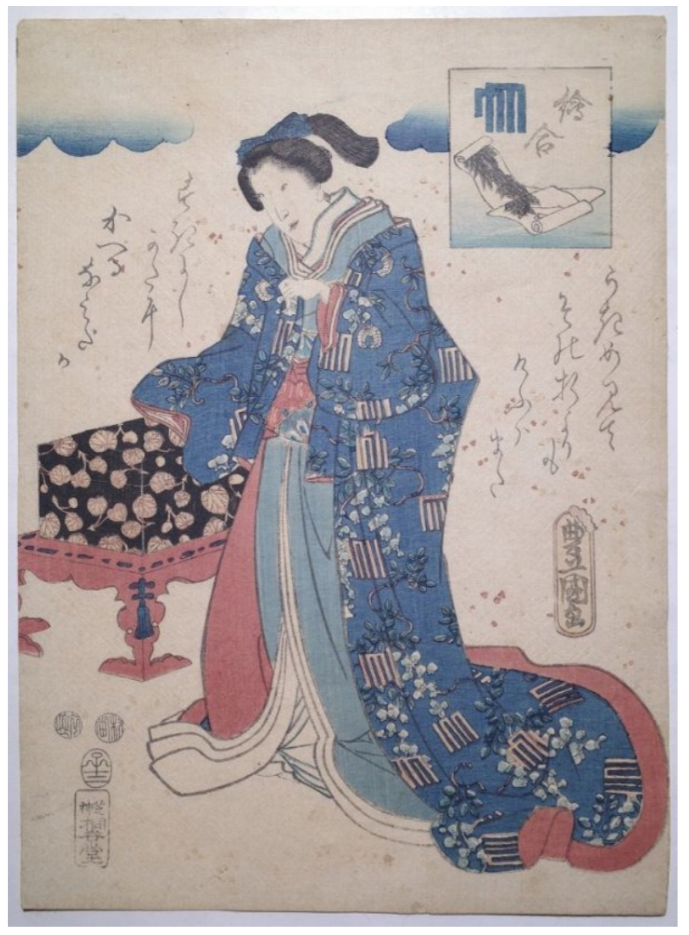
Eawase
Fifty four scenes from Genji
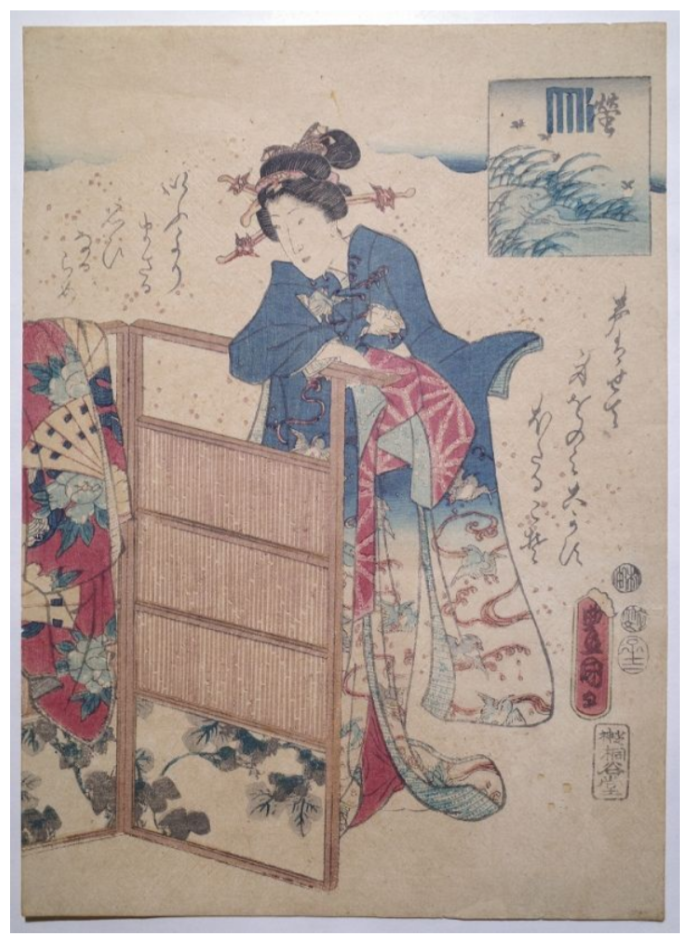
Hotaru
Fifty four scenes from Genji

Mi o tsukushi
Fifty four scenes from Genji
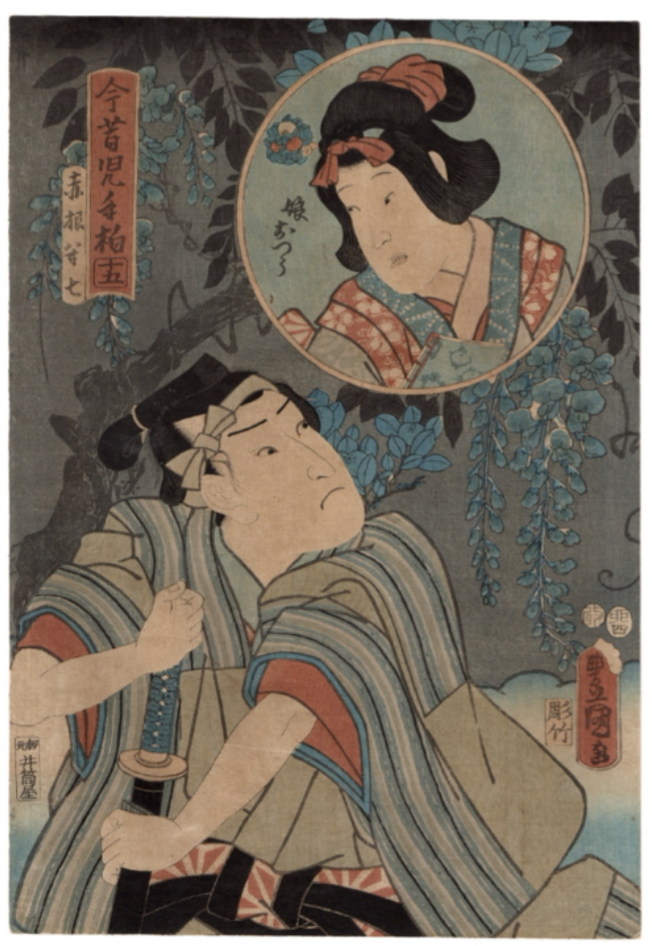
Akane Hanshichi
Konjaku konote gashiwa
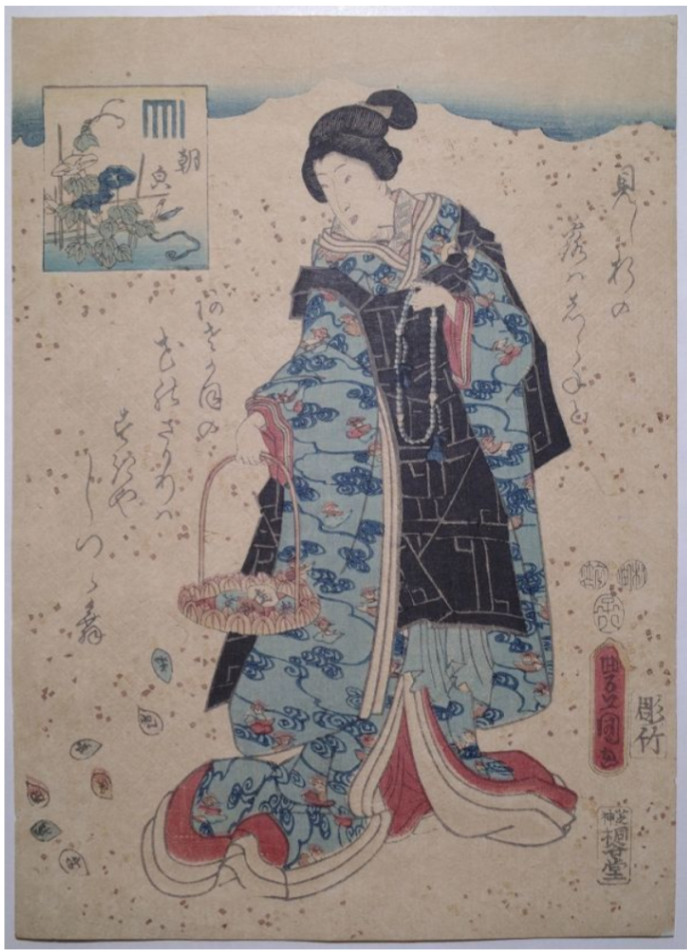
Suzumushi
Fifty four scenes from Genji
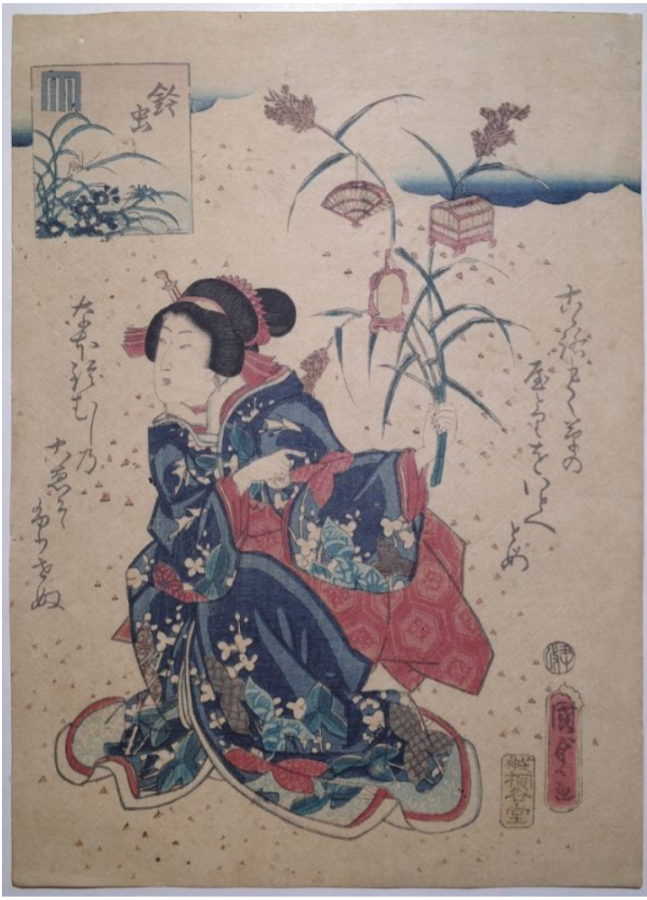
Asagao
Fifty four scenes from Genji

Sawamura Tanosuke
The courtesan Iroha from the tea house Kanaya
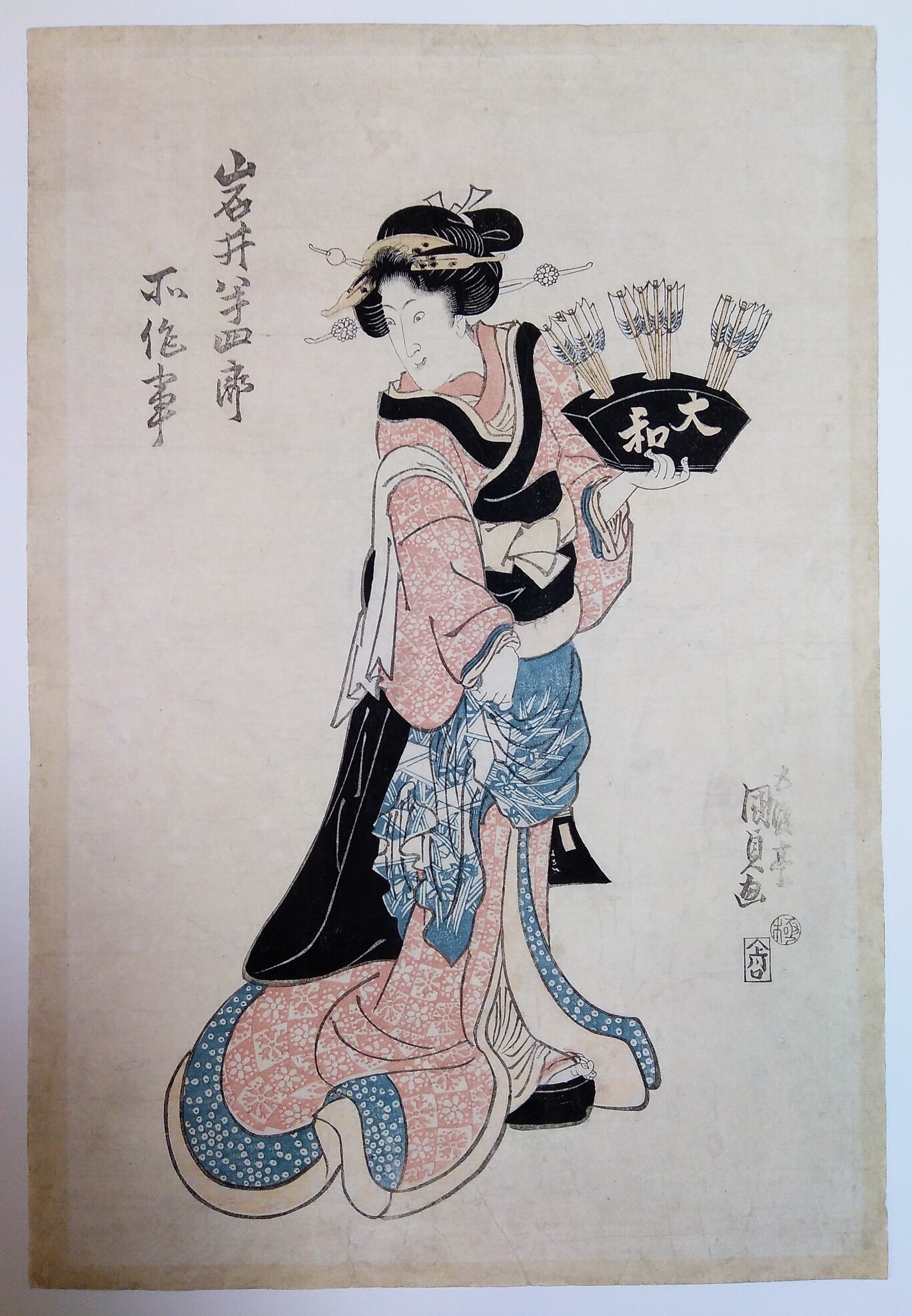
Iwai Hanshirō
Kabuki dance
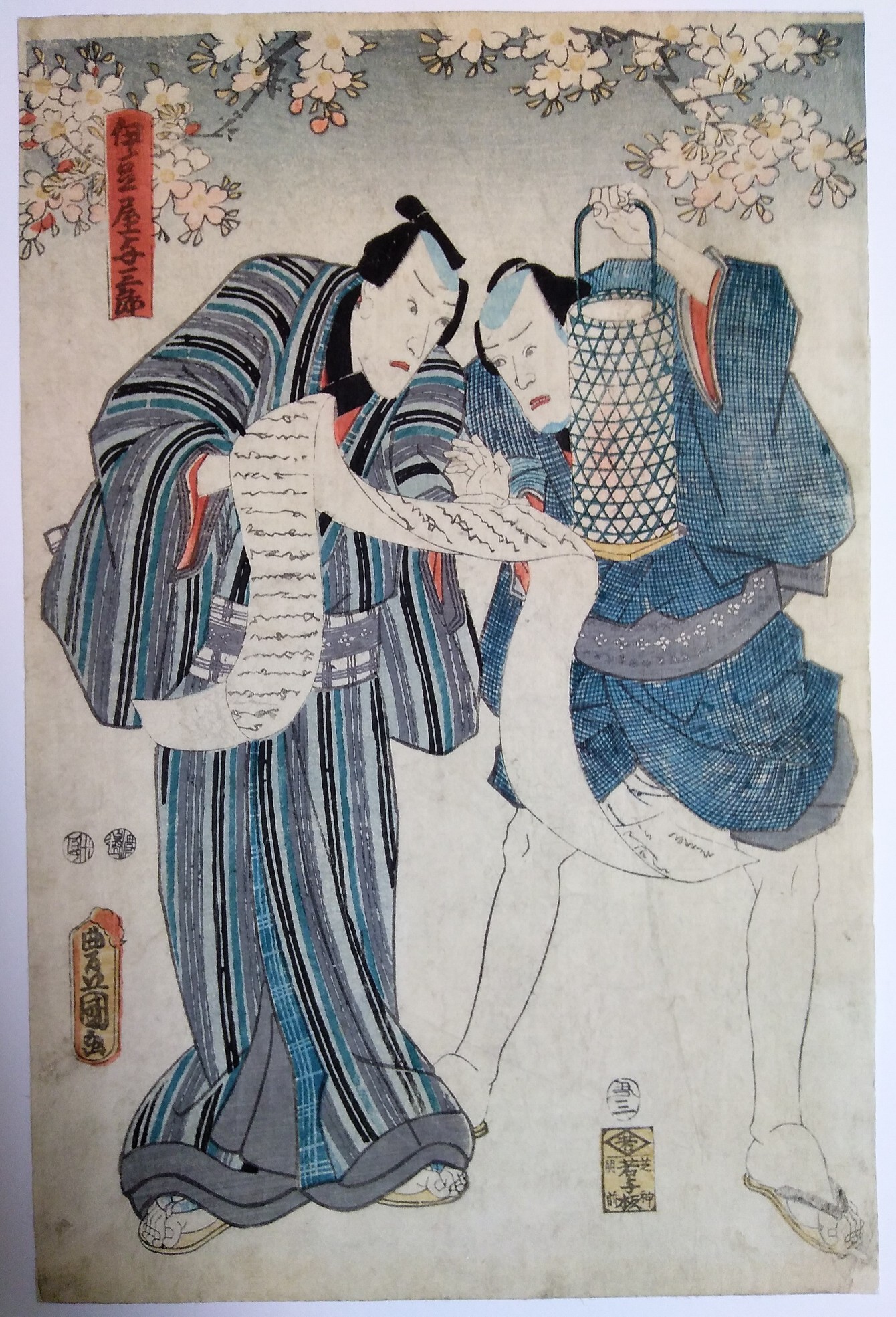
Izuya Yosaburō and Hanashika Aie
Yoha nasake ukina no Yokogushi
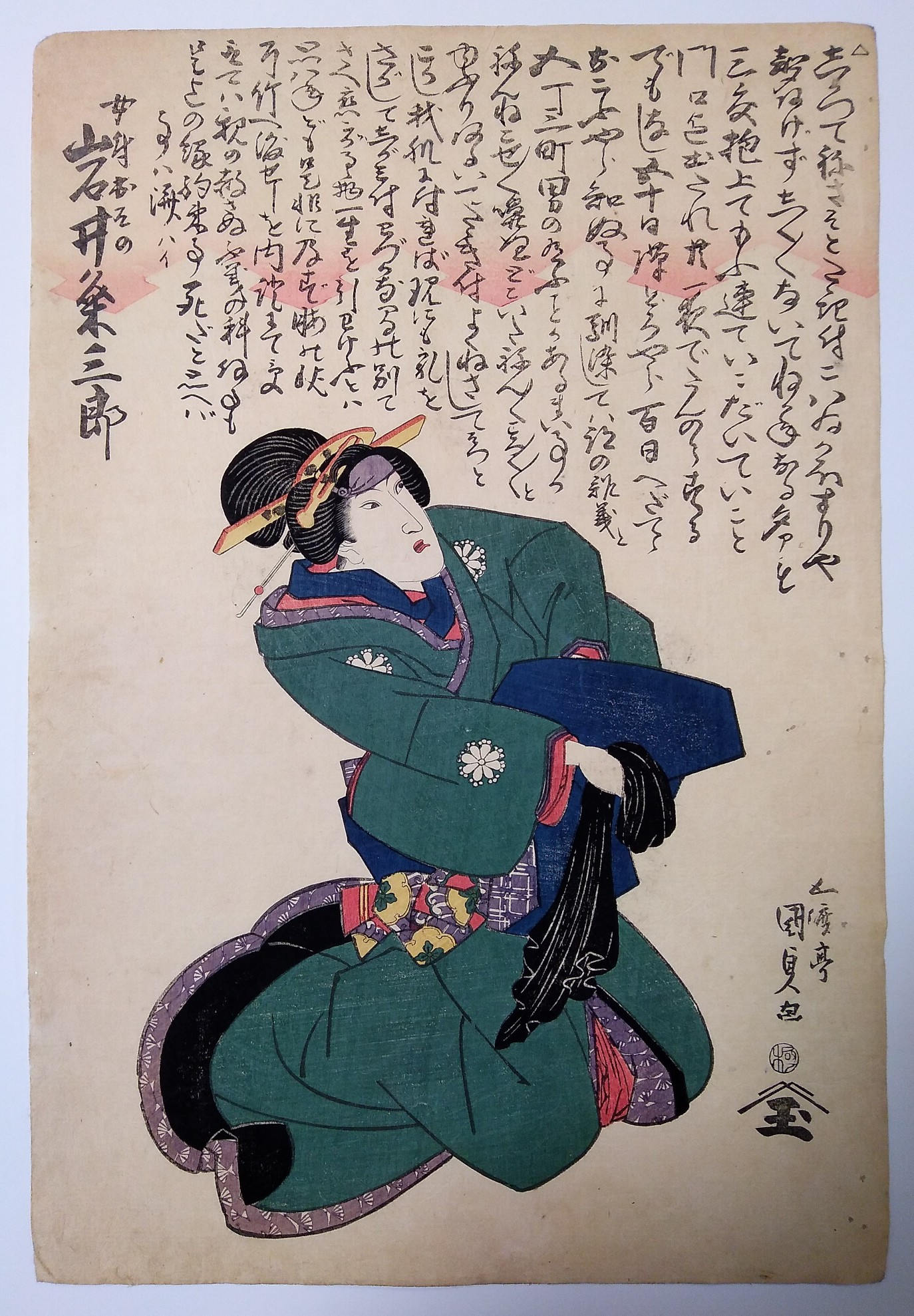
Iwai Kumesaburō as Lady Osono
Okuni iri Soga Nakamura
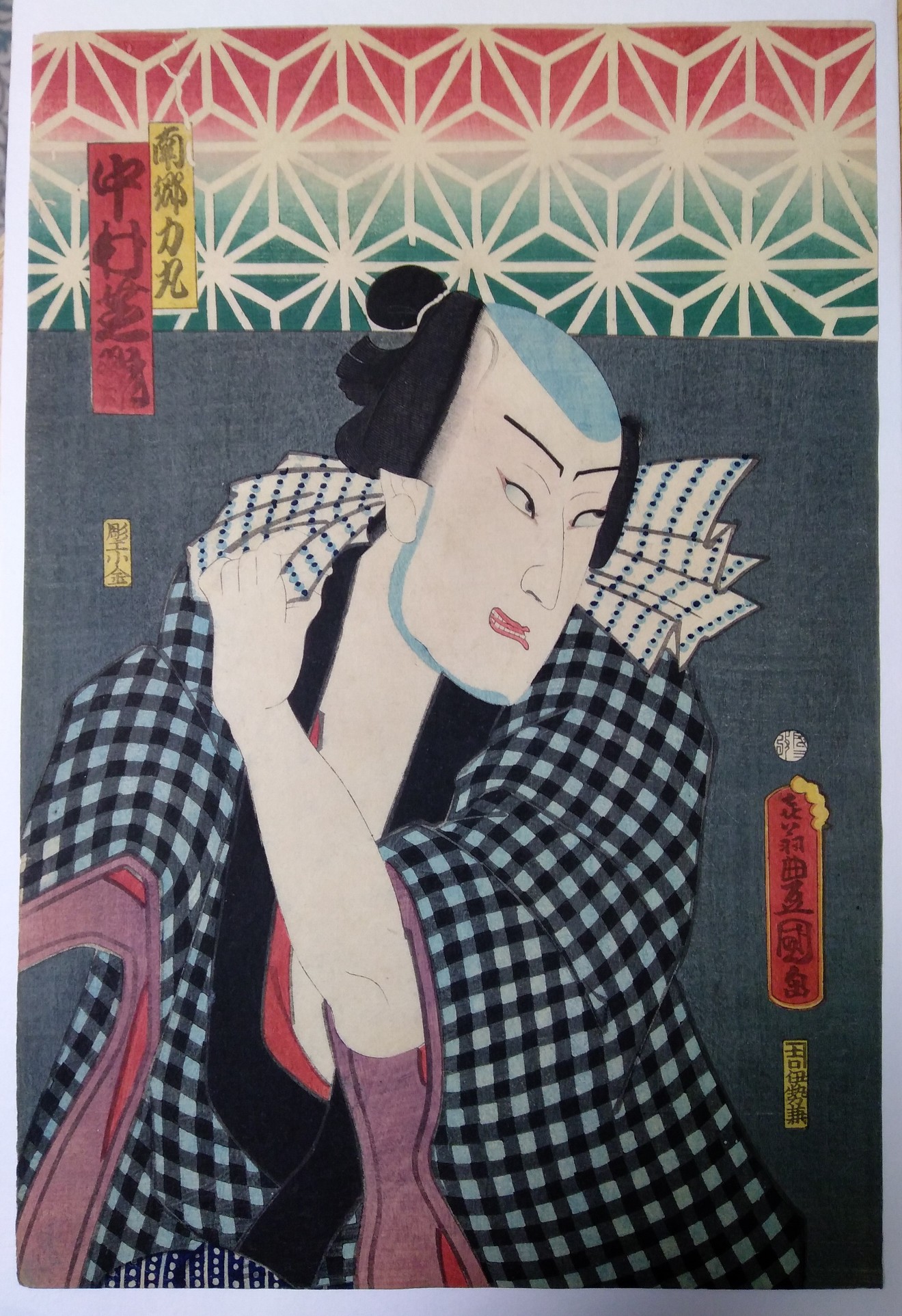
Aoto Zōshi Hana no Nishikie
Nangō Rikimaru
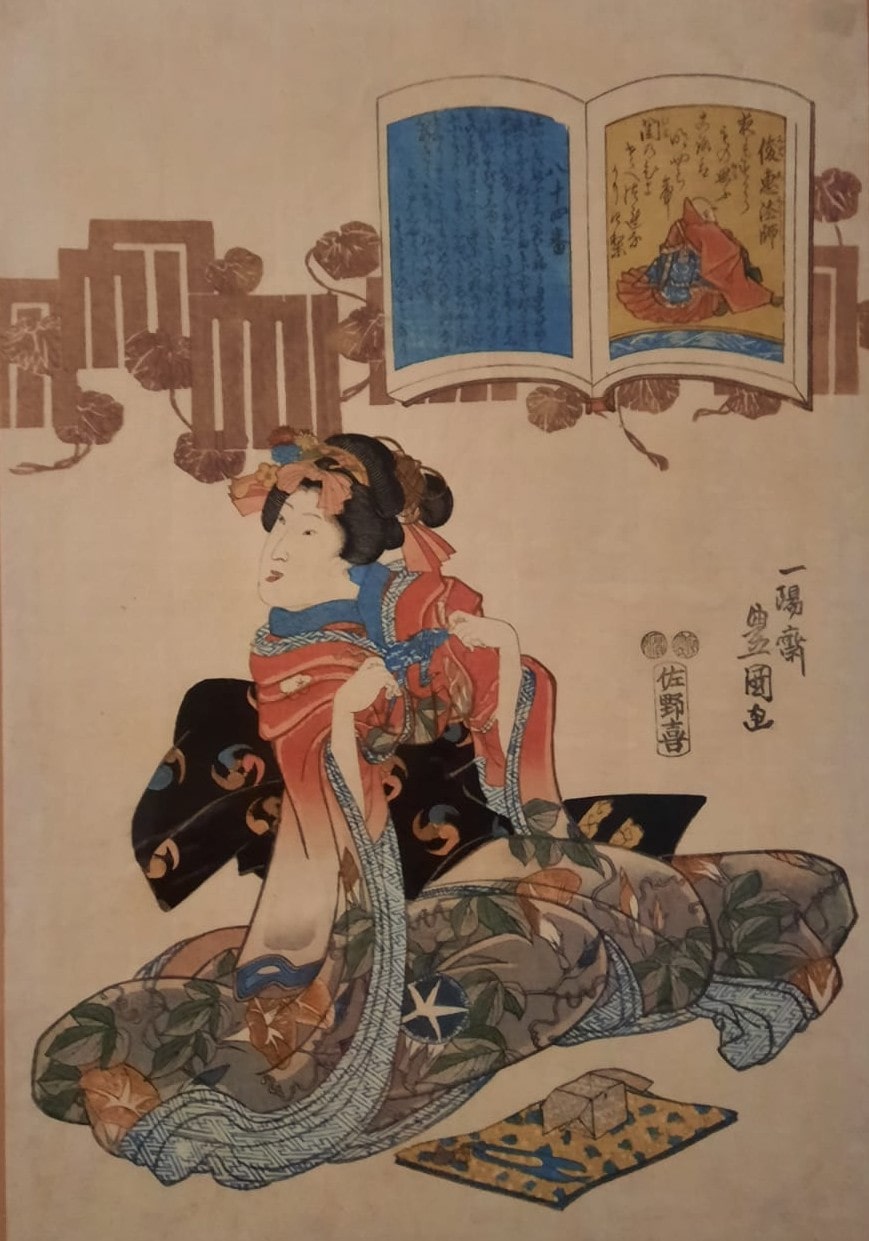
A beauty and a poem of Shune Hōshi
One hundred poets

Kewaizaka no Shōshō
Sold out
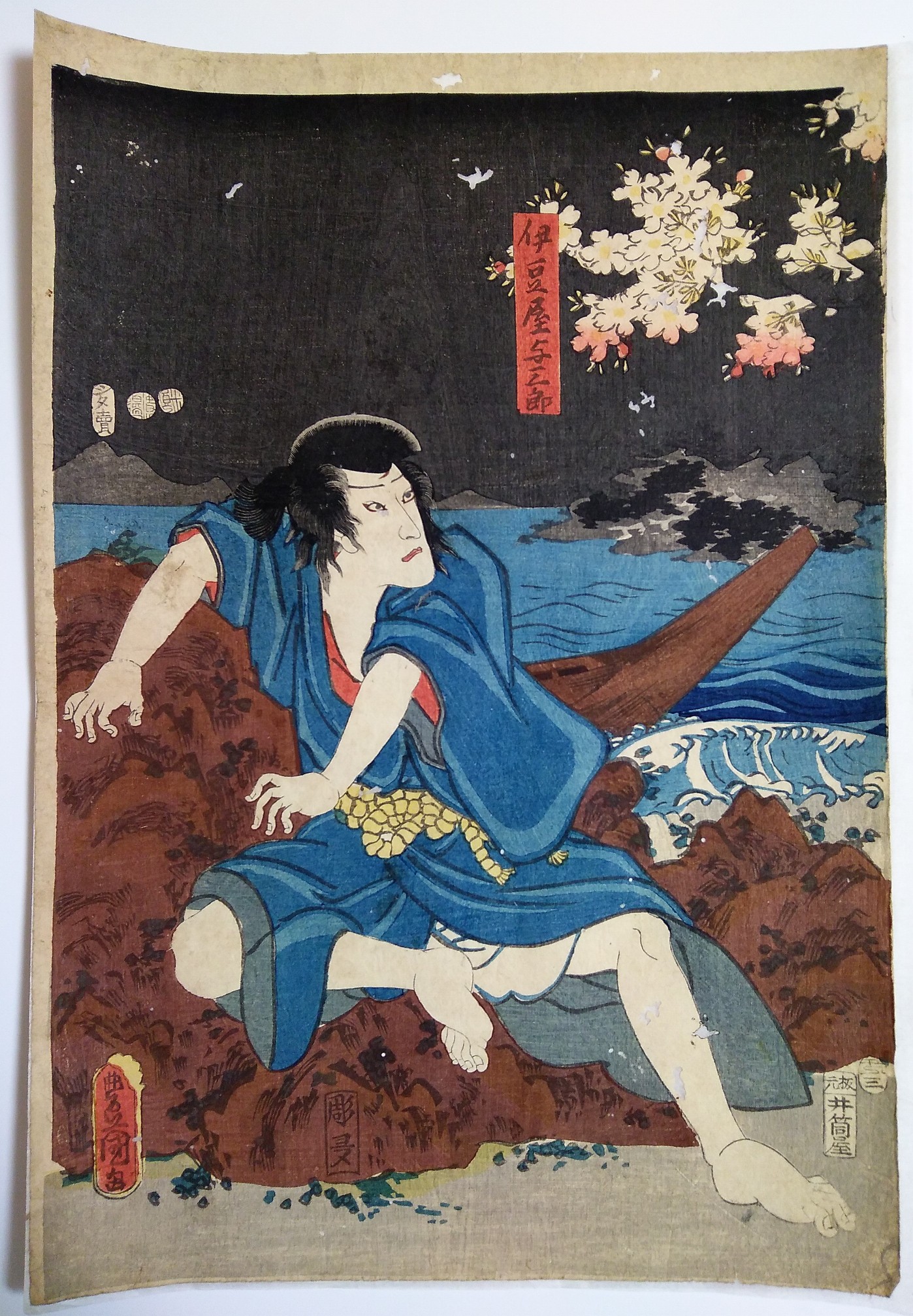
Yoha nasake ukina no Yokogushi (A)
Izuya Yosaburō
Sold out
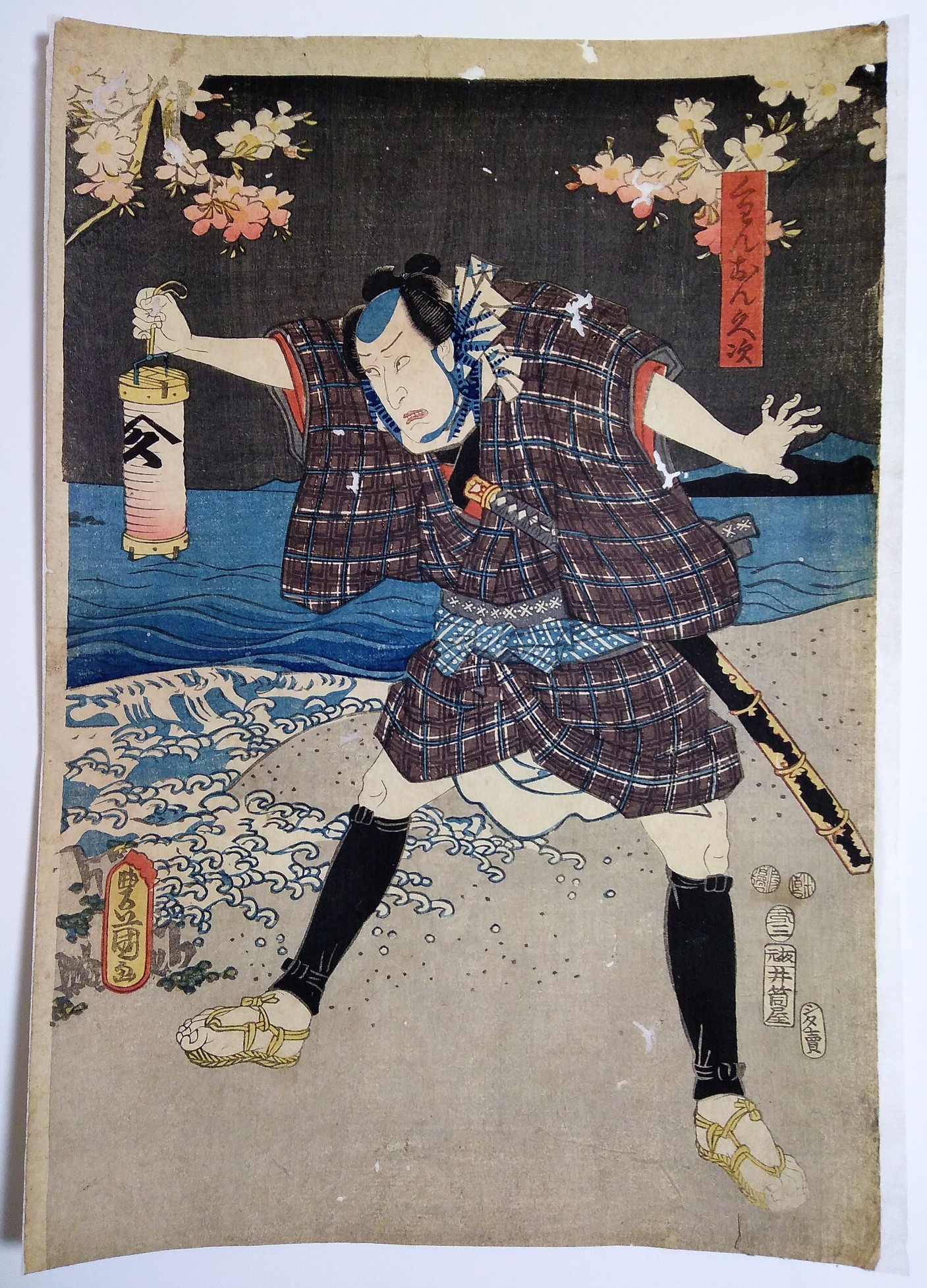
Yoha nasake ukina no Yokogushi (B)
Kuwanon Kiuji
Sold out
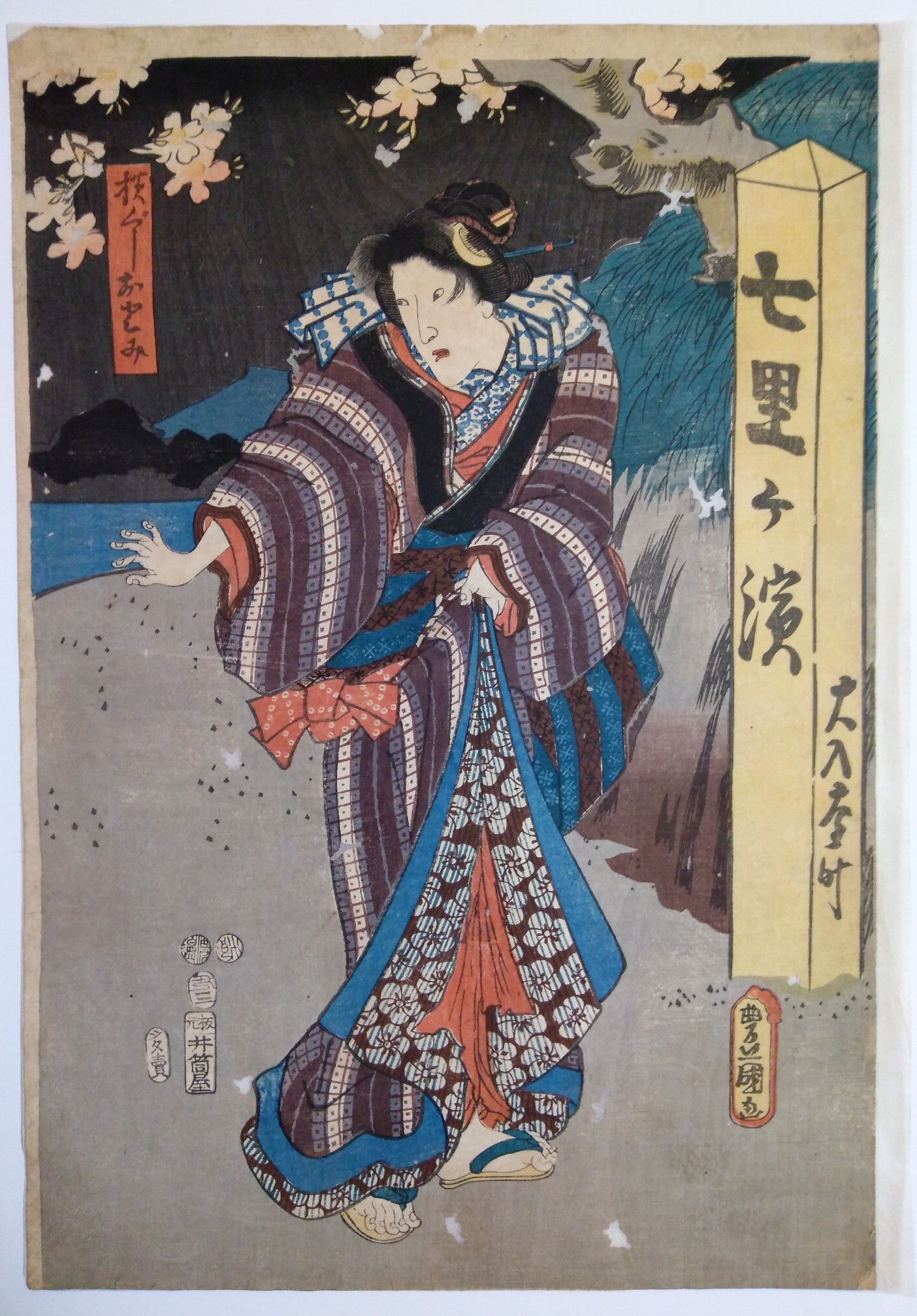
Yoha nasake ukina no Yokogushi (C)
Yokogushi Otomi
Sold out
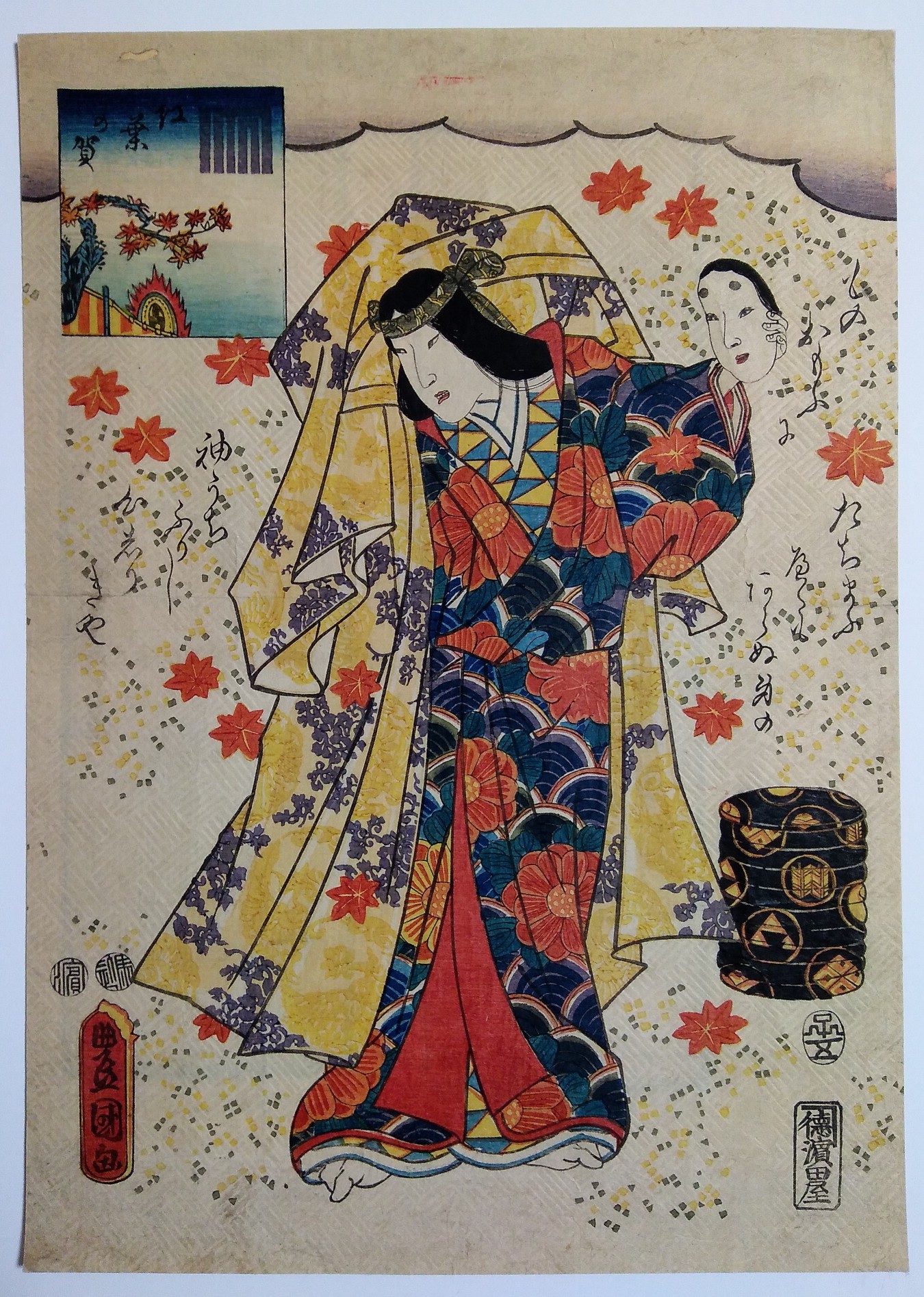
Momiji no ga
Fifty four scenes from Genji
Sold out
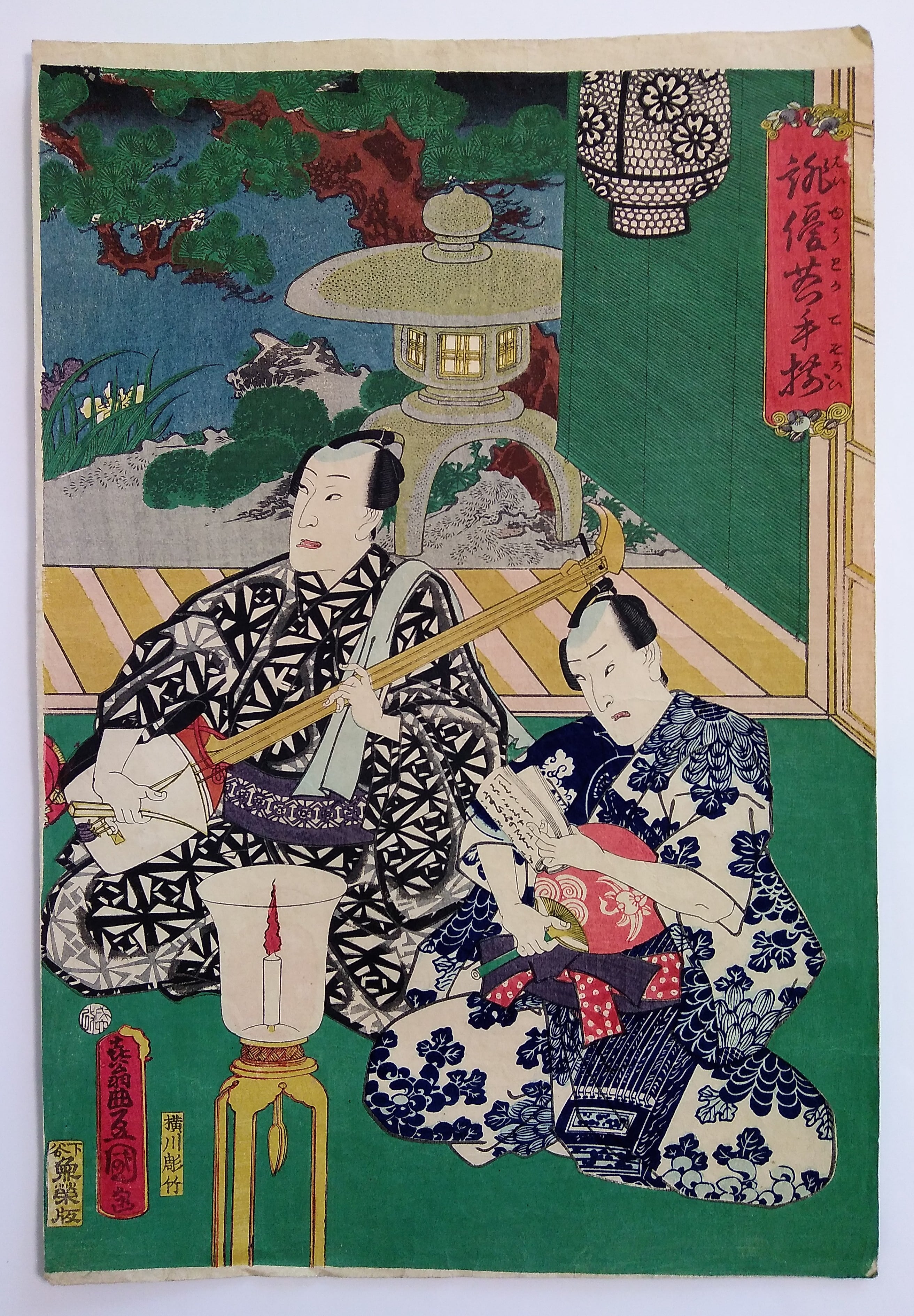
Gathering the arts: acting and reciting (C)
Sold out
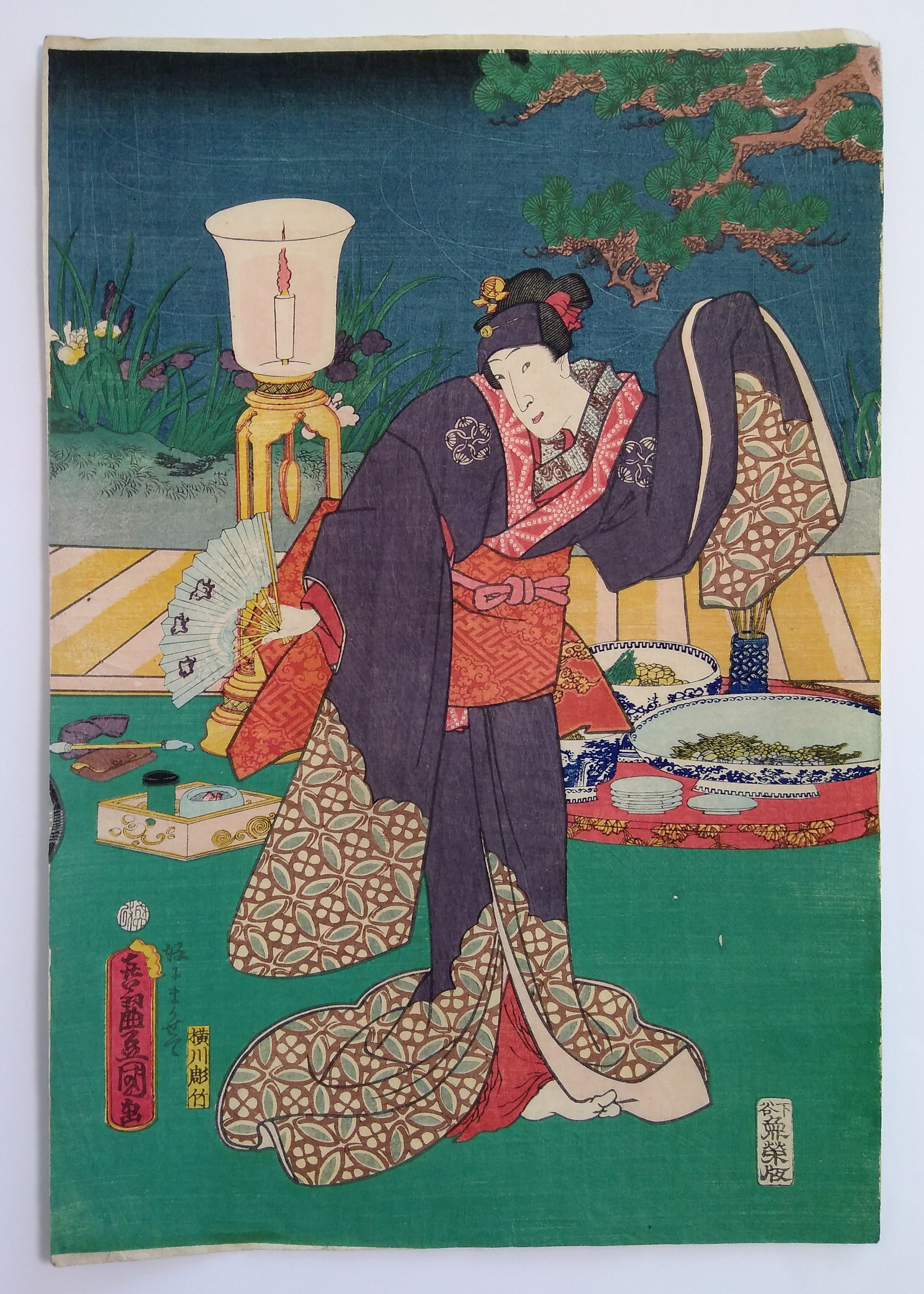
Gathering the arts: acting and reciting (B)
Sold out
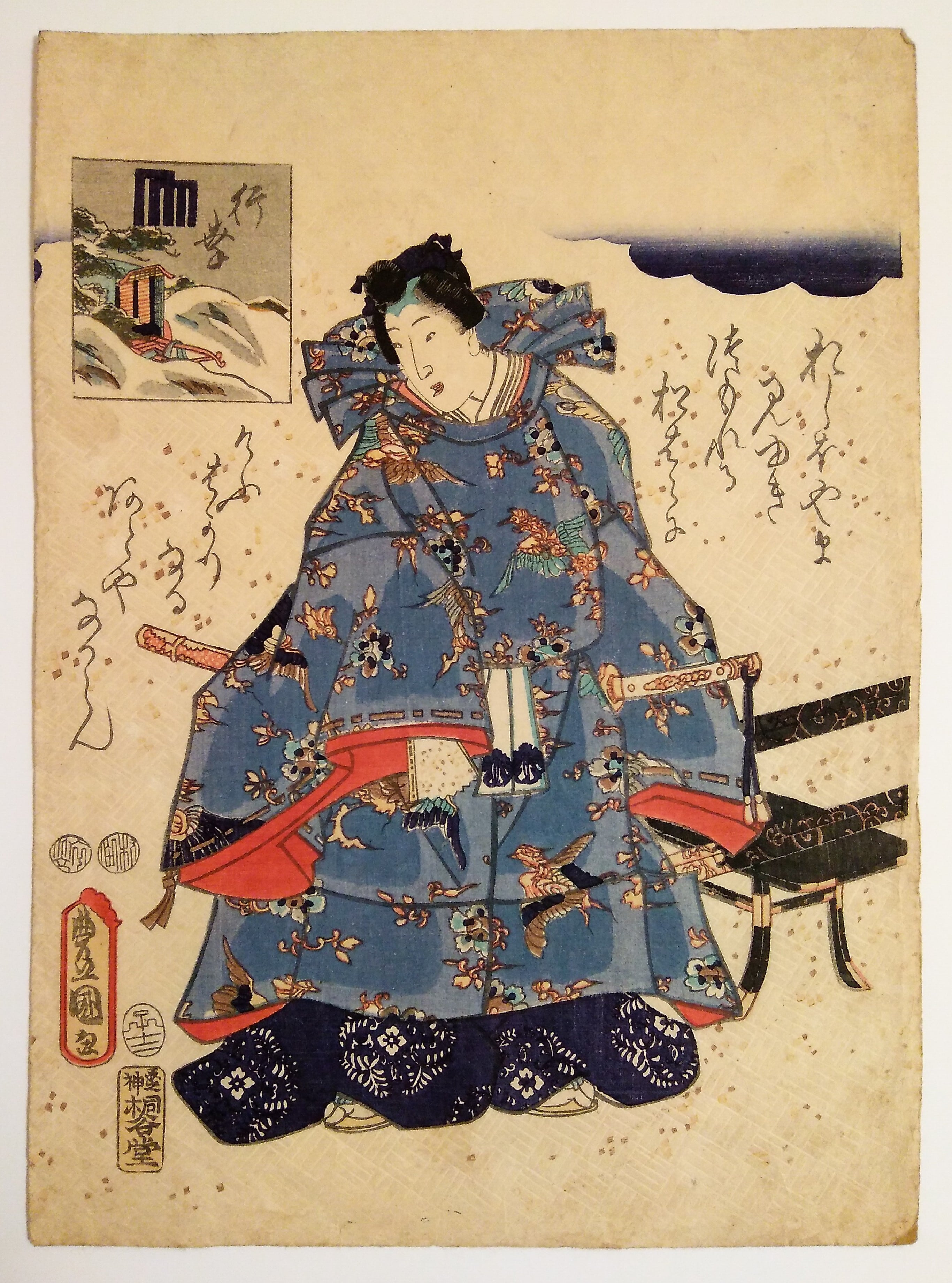
Miyuki
Fifty four scenes from Genji
Sold out
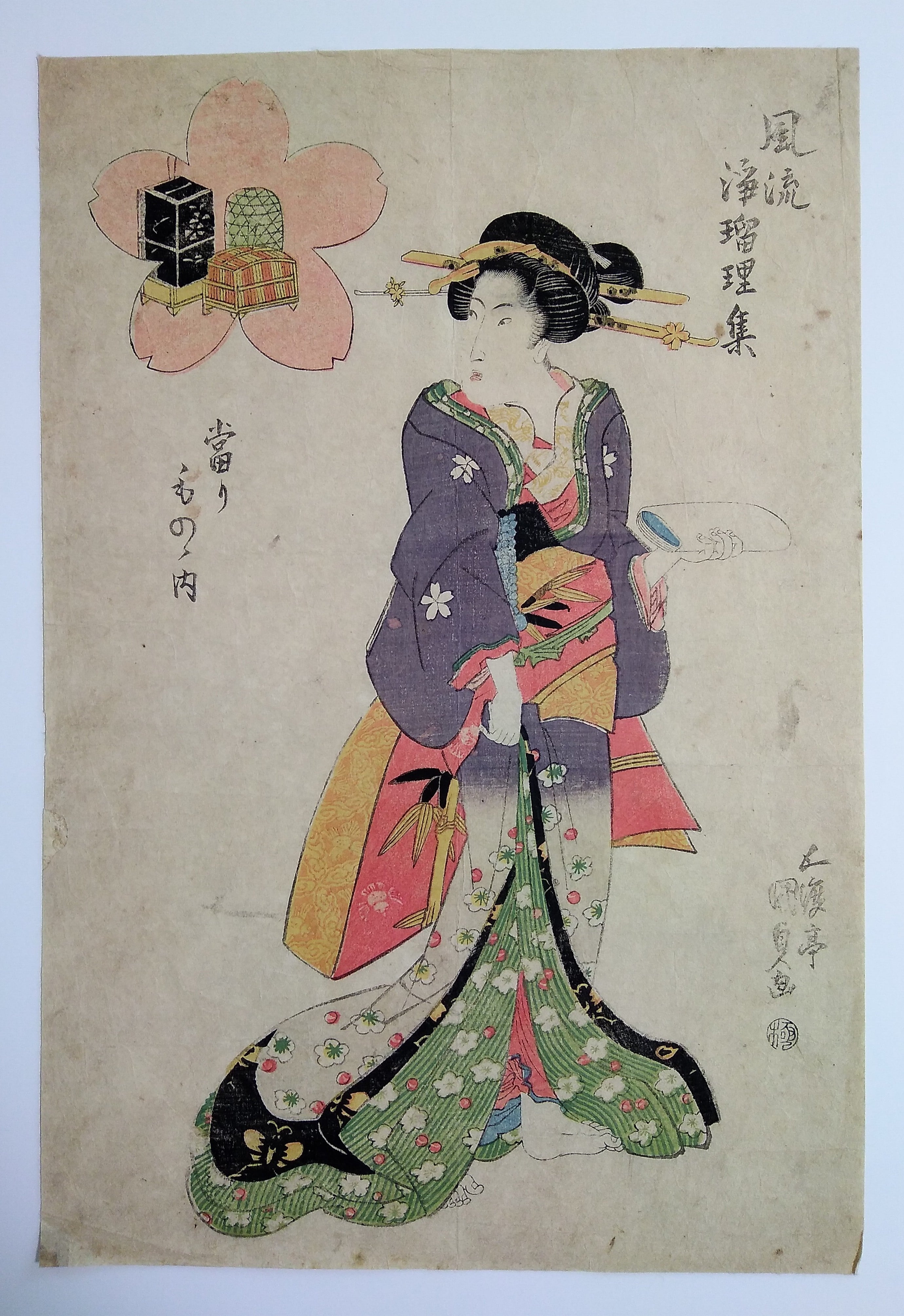
Atarimono no uchi
A collection of popular drama
Sold out
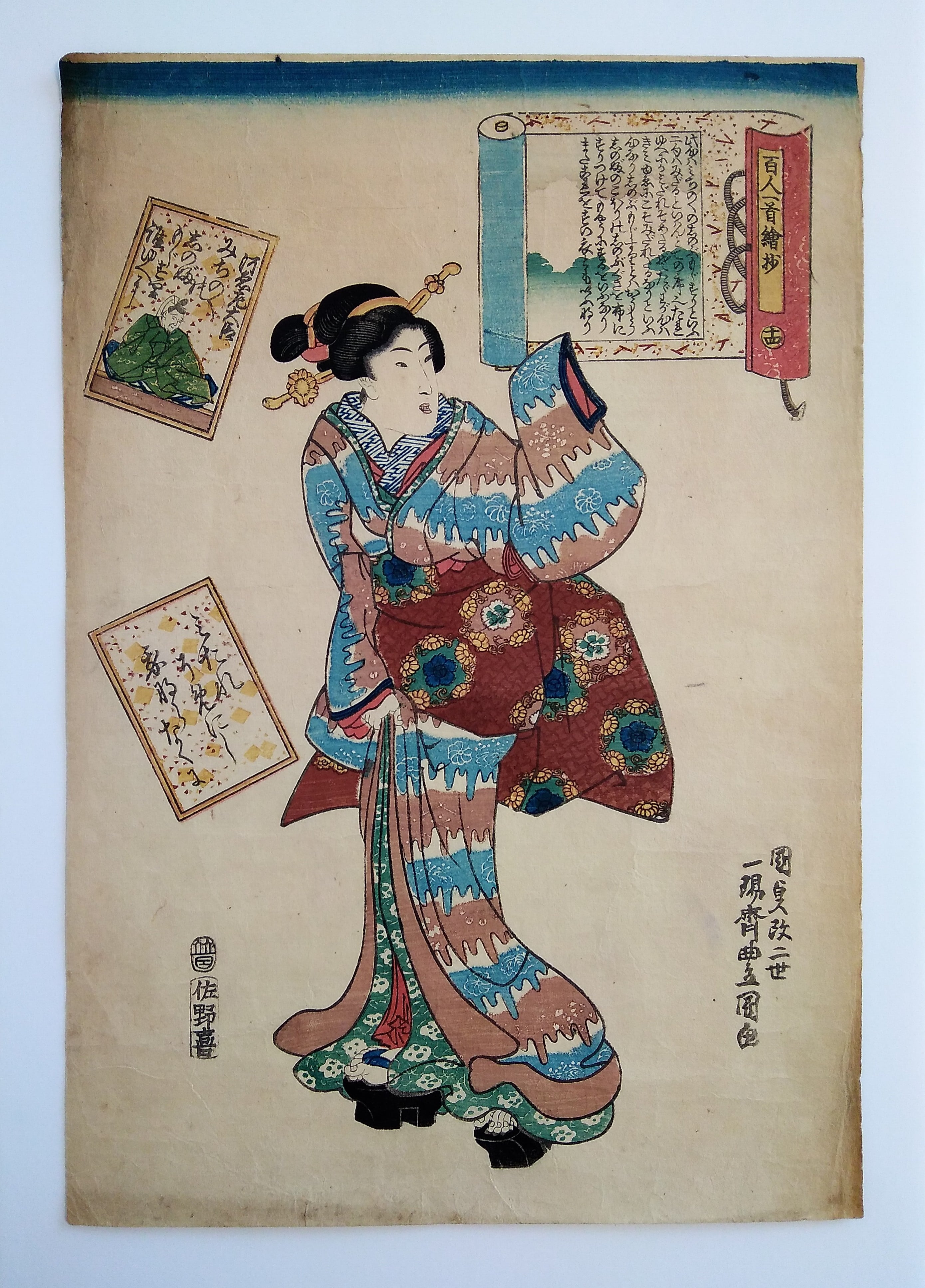
A beauty and a poem of Kawara no Sadaiji
Selection of images of one hundred poets
Sold out
